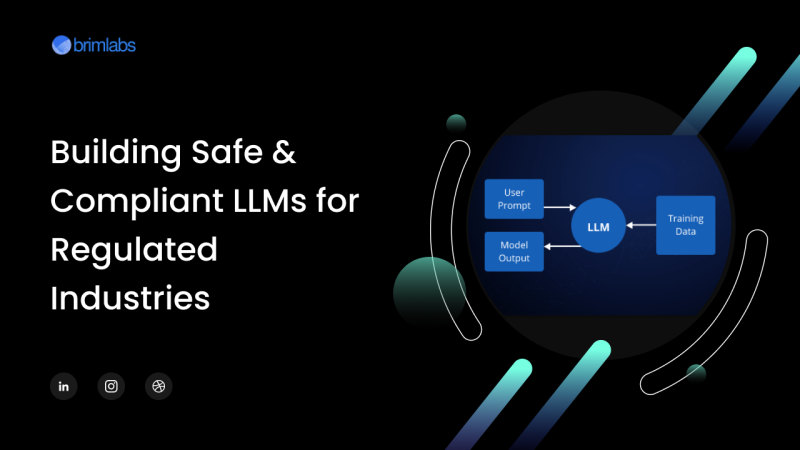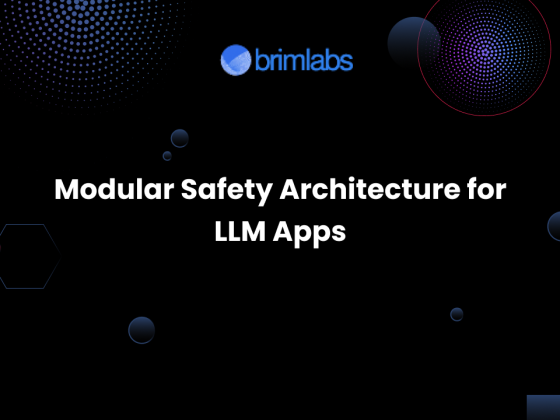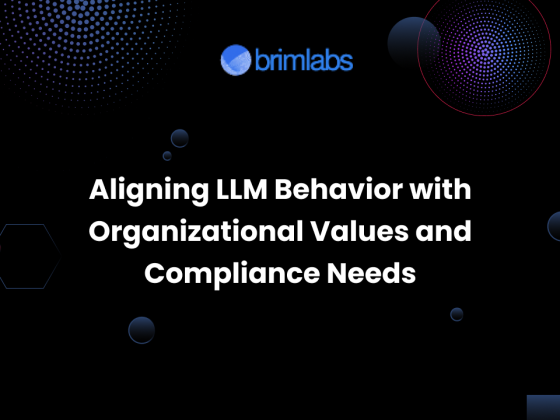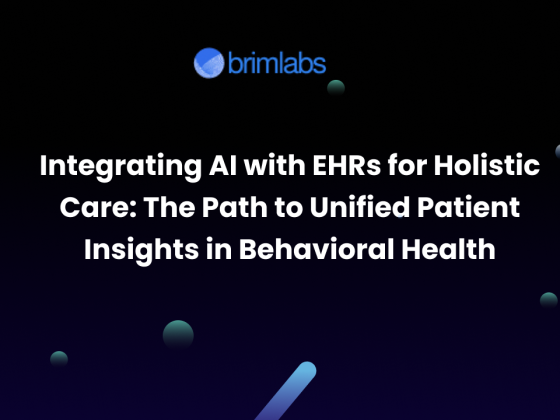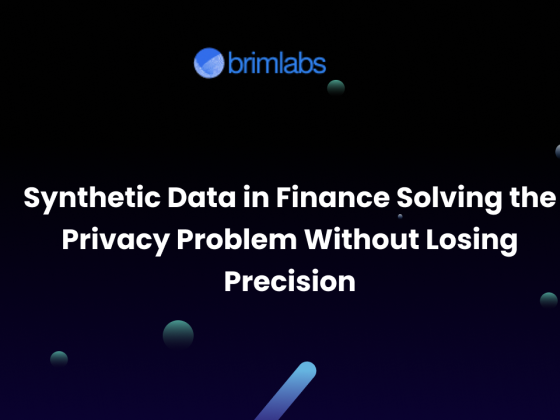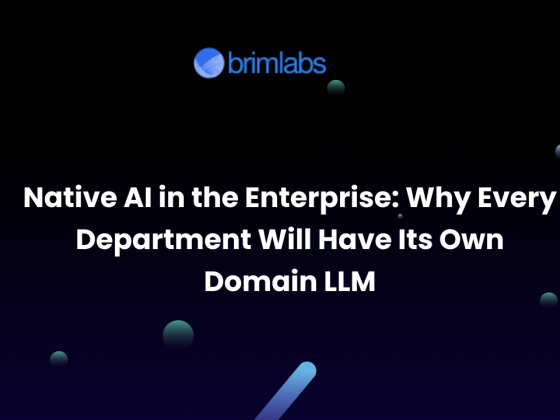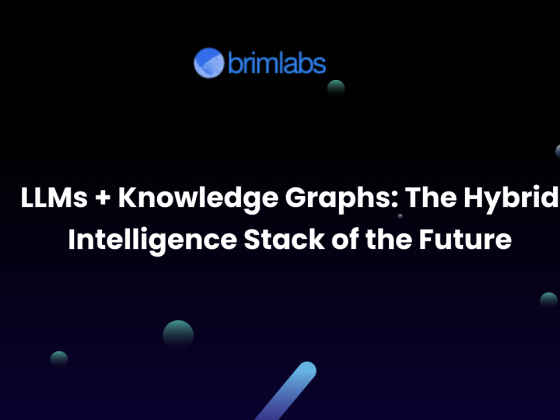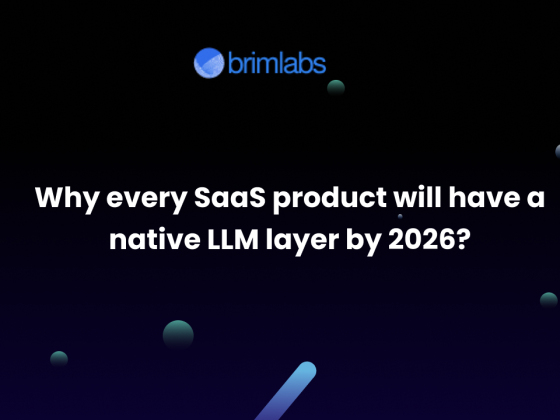The rise of LLMs has ushered in a new era of possibilities for industries across the board. But when it comes to highly regulated sectors like healthcare, finance, and law, the stakes are significantly higher. From patient data to financial disclosures to legal interpretations, LLMs must operate with precision, accountability, and compliance.
In this blog, we’ll explore:
- Why regulated industries need stricter controls
- Challenges in deploying LLMs
- Guardrails and best practices
- Industry-specific considerations
- How Brim Labs helps in building compliant, robust AI systems
Why Regulated Industries Are Different
LLMs can synthesize data, generate insights, and automate workflows. But in regulated environments, they must also:
- Adhere to strict compliance frameworks (e.g. HIPAA, GDPR, SOX)
- Ensure data confidentiality and integrity
- Avoid hallucinations or misleading outputs
- Provide explainability and audit trails
- Handle bias, fairness, and ethical risks
A single hallucinated fact or data leak can lead to multi-million dollar penalties or legal consequences.
Key Challenges in LLM Deployment
1. Data Privacy & Security
Training or fine-tuning models on sensitive data introduces risk. Patient records, financial transactions, or legal contracts must be encrypted, anonymized, and strictly controlled.
2. Bias & Fairness
LLMs often reflect biases in their training data. In finance or law, biased outputs can lead to discriminatory lending or flawed legal analysis.
3. Explainability
Unlike traditional rule-based systems, LLMs are black boxes. Regulated industries require decisions to be interpretable and auditable.
4. Consistency & Accuracy
Generating legally sound, financially accurate, or medically reliable content is non-trivial. A slight error in an AI-generated medical summary or financial forecast could have serious implications.
Guardrails for LLMs in Regulated Industries
Let’s break down the essential guardrails:
1. Data Governance & Compliance
- Use data masking, differential privacy, and synthetic data for training
- Comply with regulations: HIPAA (Healthcare), GLBA/FINRA (Finance), GDPR (General), etc.
- Maintain logs and data lineage for audits
2. Model Fine-Tuning with Domain Experts
- Fine-tune on curated, vetted corpora under the supervision of domain experts
- Align outputs with industry guidelines and protocols
3. Real-time Validation Layers
- Use rule-based post-processing filters to detect hallucinations or risky content
- Incorporate human-in-the-loop review systems
4. Prompt Engineering & Output Constraints
- Engineer prompts that enforce regulatory constraints
- Use output templates, structured formats, and confidence scoring
5. Explainability & Traceability
- Integrate tools like SHAP, LIME, and Tracr for interpretability
- Store reasoning trails for compliance and internal review
6. Continuous Monitoring & Feedback Loops
- Deploy MLOps pipelines for real-time monitoring and alerts
- Integrate feedback mechanisms for error correction and continuous learning
Industry Deep Dive
Healthcare
- Use Case: AI-generated clinical summaries, symptom checkers, medical billing
- Guardrails: HIPAA compliance, FHIR data standards, zero hallucination tolerance
- Tech Stack: Use LLMs with RAG (Retrieval-Augmented Generation) from verified medical databases like UMLS or PubMed
Finance
- Use Case: Risk analysis, customer support, fraud detection, document automation
- Guardrails: FINRA, SOX, GDPR, anti-money laundering (AML) rules
- Tech Stack: LLMs integrated with real-time financial APIs, deterministic prompts, and scenario-based simulations
Law
- Use Case: Legal research, contract summarization, case prediction
- Guardrails: Legal precedent alignment, jurisdiction tagging, non-disclosure of sensitive entities
- Tech Stack: Domain-adapted LLMs using corpora like CaseLaw, CourtListener, paired with knowledge graphs
The Future: Hybrid Intelligence
Regulated industries won’t simply rely on LLMs in isolation. Instead, hybrid models combining rule-based engines, human expertise, and AI will define the next-gen workflow.
Think of it like this:
- LLMs for exploration, summarization, and idea generation
- Humans for validation, risk assessment, and final decisions
- Compliance layers for governance, traceability, and auditability
How Brim Labs Supports Regulated AI Deployments
At Brim Labs, we specialize in building and deploying AI solutions for sensitive and high-stakes environments. Whether you’re a healthcare startup, fintech platform, or legal tech innovator, our team helps you:
- Build custom LLM pipelines with compliance-by-design
- Integrate domain-specific data sources and retrieval systems
- Implement explainable AI, privacy-first architectures, and real-time monitoring
- Partner with your compliance and legal teams to align AI with industry standards
We understand that innovation in regulated industries is not just about speed, it’s about safety, transparency, and trust. And we’re here to help you strike that balance.

